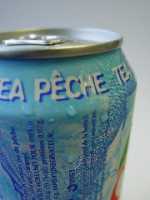|
|
 |
|
|
|
 |
| |
|
|
 |
Clouds & Particles
More |
Formation of droplets
A cloud is born when water vapour in the atmosphere becomes liquid, that is the humid air is cooled. More accurately, what are the relationships between temperature and amount of water in the air? Inside a cloud, what is the droplets size? |
|
|
|
|
 |
Saturation of air
The quantity of water vapour that air can hold depends of its temperature. For a given temperature, the relationship of how much water a given mass of air actually holds, compared to the amount it can hold is its relative humidity.
Air is said to be saturated when it holds as much water vapour as it can. Saturated air has therefore a relative humidity of 100%. Supersaturated air has a relative humidity of more than 100%.
Look at the table below the maximum amount of water vapour that the air can contain before condensation begins, for different temperatures: |
|
T°C |
-20 |
-10 |
0 |
+10 |
+20 |
+30 |
|
Amount of water vapour
(g of water/m3 of air) |
1,1 |
2,3 |
4,8 |
9,4 |
17,3 |
30,5 | |
|
For example, imagine an air parcel at 20°C that contains a water vapour concentration of 9,4 g/m3. The relative humidity is equal to 100 x (9,4/17,3) = 54,3%. Assume the air parcel cools down to 10°C (for example by rising in the atmosphere): relative humidity is now 100%. Air is saturated. Imagine temperature continues to decrease until 0°C. At this temperature, the maximum quantity of water vapour that air can hold is 4,8 g/m3. Hence the air parcel is supersaturated by (9,4 - 4,8) = 4,6 g of water. This extra water condenses on available aerosol particles forming cloud droplets and the air parcel relative humidity returns to 100% with a water vapour concentration of 4,8 g/m3. |
The more the air is warm, the more water it can hold. This is why warm air is used to dry objects: it absorbs moisture. On the other hand, cooling saturated air forces water to condense. This is why a can of cold soda sweats: it causes the air next to it to give up its moisture.
|
 |
 |
 |
|
1. A soda can that sweats. Source: C. Gourbeyre.
|
|
The droplets inside the cloud
Cloud droplets sizes vary from a few micrometers to more than 100µm (0,1 mm) for the larger ones, with average diameters usually around 10 µm. Continental clouds tend to have smaller droplets, whereas marine clouds are characterized by bigger droplets and smaller droplets concentration. Usually the density of droplets in the cloud is between 25 000 to 1 million of droplets per litre of air.
The distance between 2 droplets is around 1,4 mm, corresponding to 70 times their diameter (it looks like one football every 20 or 30 meters).
In order to precipitate, droplets need to grow until they reach size around 1 mm, meaning they have to become one hundred times bigger than they were! |
|
|
 |
For "warm clouds" (those containing no ice), droplets can grow to precipitation size by sticking to each others. As times passes the drops become larger and larger, until they are too heavy to remain suspended in the air by the up-drafts that counterbalance the droplet falling. In cumulonimbus clouds for example, vertical currents are very strong, explaining why the raindrops are so big during thunderstorms. |
|
Colder clouds are composed of ice crystals, liquid water and water vapor. Water vapour condenses on ice crystals, and liquid droplets freeze in contact with the ice crystals. As they become bigger and bigger, the ice crystals fall as snow, or rain if they melt before reaching the ground. |
About this page...
Author: J. Gourdeau, LAMP Clermont-Ferrand, France
Scientific reviewing: Pr Jean-François Gayet, LaMP CNRS, France.
Date of generation: 2003-10-15. Last published: 2004-04-22.
|
|
 |
|









